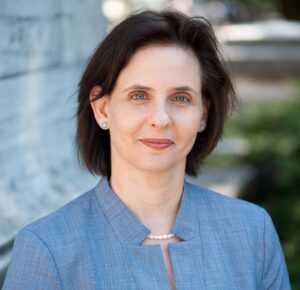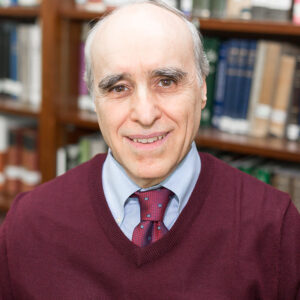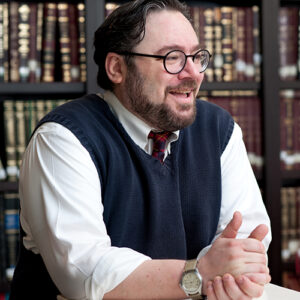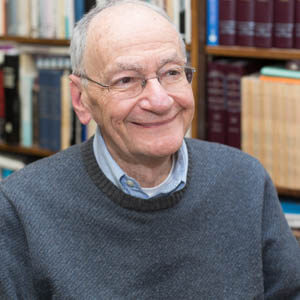
Prayer as Resonance
Mar 29, 2024 By Luciana Pajecki Lederman | Commentary | Shabbat Parah | Tzav
According to sociologist Harmut Rosa, the main role of rituals is to produce axes of resonance, through which we not only affect but also open ourselves to being affected by God, people, and even things around us. In conceiving of Jewish prayer, our ancient rabbis indicate a concern with creating resonance, by balancing “affecting” and “being affected.”
Read More
When Is Humility Not a Virtue?
Mar 10, 2023 By Walter Herzberg | Commentary | Ki Tissa | Shabbat Parah
Moses’s actions are puzzling and confront us with two related questions: On the one hand, why did Moses need to place the veil on his face? And on the other, why did Moses remove the veil when going before God and when relaying God’s words to the people—only to replace it as described above? Biblical commentators offer some fascinating insights.
Read More
The Deathly Power of the Holy
Mar 25, 2022 By Marcus Mordecai Schwartz | Commentary | Shabbat Parah | Shemini
Finding the right words after loss is hard, but Moses’s comments to Aaron in this week’s parashah are unusually difficult. At the moment that God fills Aaron’s hands with abundance, appointing him as high-priest and his descendants as an eternal priesthood, his two eldest die when they attempt to offer incense with a flame brought from outside the newly dedicated sanctuary—a strange, uncommanded offering. “And fire came forth from the LORD and consumed them . . .”
Read More
The Promise of a New Heart and a New Spirit: Lev Hadash Veruah Hadashah
Mar 29, 2019 By Mychal Springer | Commentary | Shabbat Parah | Shemini
This Shabbat is Shabbat Parah, the Shabbat of the Red Heifer. The special Torah reading for this Shabbat, in Numbers 19, addresses the defilement of coming into contact with the dead. The Parah Adumah section makes clear that contact with the dead disrupts our ability to function, and that we must engage in a ritual in order to be restored into society and into proper relationship with God. And anyone who is involved with the ritual that purifies others will become impure in the process; there is no way to eradicate the impurity absolutely.
Read More
The Spiritual Significance of the Sacrificial Cult
Mar 29, 1997 By Ismar Schorsch | Commentary | Shabbat Parah | Tzav
Our Hebrew Scripture is a library of books with many voices, a bracing diversity of literary genres and religious opinions. This is a good week to remind ourselves of that noteworthy fact as we struggle through a double dosage of cultic prescriptions. Our parasha stipulates the tasks incumbent on the priests in administering the sacrifices that ordinary Israelites might offer at the Tabernacle. On top of that, because this Shabbat is the third of the four special Shabbatot leading up to Passover, we are treated to an additional reading dealing with the potion prepared from the ashes of an unblemished red heifer for the purpose of ritual purification.
Read More
God As a Tragic Character
Apr 2, 2005 By Ismar Schorsch | Commentary | Shabbat Parah | Shemini
Ours is not the first generation to discover that we live in an imperfect world.
Read More
Two Cows
Mar 2, 2002 By Lauren Eichler Berkun | Commentary | Ki Tissa | Shabbat Parah
There is a certain irony when parashat Ki Tissa falls on Shabbat Parah. In our weekly Torah portion, we read about the sin of the golden calf. In the maftir for this special Shabbat preceding Passover, we read about the ritual of the red heifer. Two cows on one Shabbat! One cow represents our complete abandonment of God a mere forty days after the revelation at Mt. Sinai. The other cow represents our ability to purify ourselves in the face of death and defilement.
Read More
The Polarities of Judaism
Apr 13, 2004 By Ismar Schorsch | Commentary | Ki Tissa | Shabbat Parah
The instructions of God to Moses concerning the building of the Tabernacle culminate with the command to observe the Sabbath. Holiness in time follows holiness in space. As the Tabernacle constitutes a sacred space in which the nearness of God is a felt experience, so the Sabbath is a portion of the week set apart to admit God into our lives. Whereas the holiness of the Sanctuary is sharply delimited and restricted in access, that of Shabbat is universally accessible. The Tabernacle is a public space, the community’s link between heaven and earth, administered by a priestly hierarchy and subject to laws of purity.
Read More


